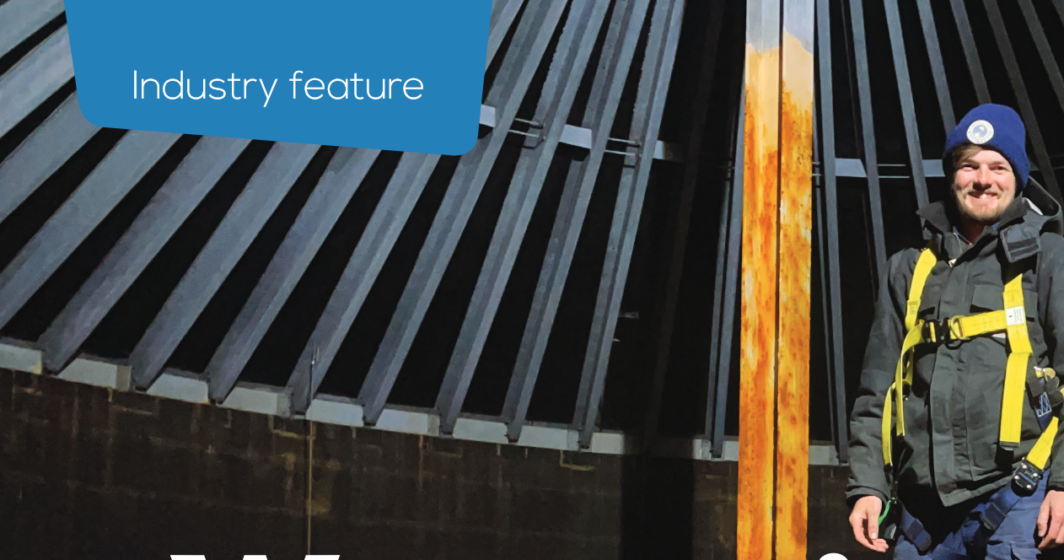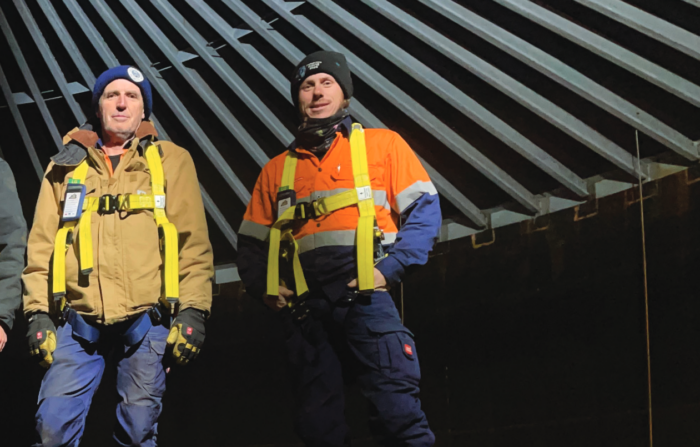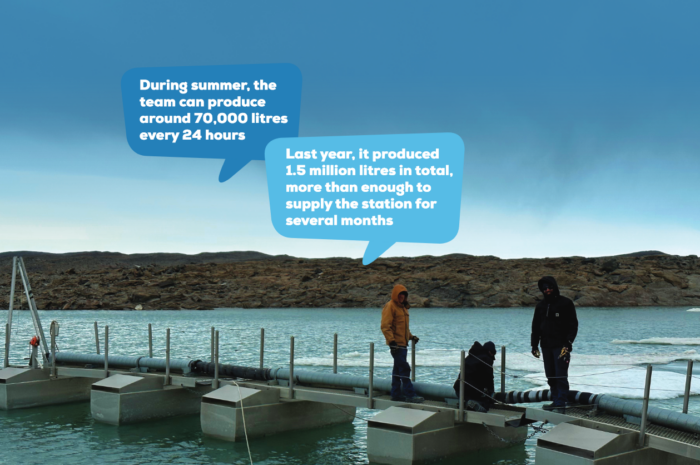Australian plumbers are at the centre of producing clean water for Davis research centre through a desalination project. Kathryn Kernohan reports on just how tricky that is in the world’s coldest, driest and windiest continent.


The Australian team of scientists and support staff at Davis research station - one of three permanent bases on Antarctica managed by the Australian Antarctic Program to conduct research about the impacts of environmental change and pollution on marine ecosystems - uses up to 3,000 litres of water a day.
But where water is often plentiful at home, on the world’s coldest, driest and windiest continent it’s a scarce commodity. That’s why, among their day-to-day duties, maintaining, installing and operating equipment and systems, the skilled and experienced plumbers on site help to lead a reserve osmosis plant to turn sea water into drinking water and provide all the station’s water supply.
The challenging conditions and the fact the tarn (mountain lake) the seawater is sourced from is frozen solid for about nine months of each year means the team has a relatively small window to get to work.
“Our main project for the year is basically the desalination plant, which we call the R.O. Most of the time it sits out in the open with a bit of fixed pipe work going down to a frozen lake,” says Shane Bilston, who is currently on his fourth expedition to Antarctica.
“But when summer rolls around, everything starts to slowly melt. Eventually the people at Head Office in Kingston, back in Tasmania, give you the go ahead for it.”
The go ahead means the team uses a crane to put an aluminium floating pontoon in place, to allow them to reach the deepest part of the lake, then places a pump into the lake and maintains close communication with the team back in Australia.
Todd Schulz, a plumber on his first expedition to Antarctica, says the crew in Kingston keep a close eye on their work and provide valuable guidance to ensure everything runs smoothly.
“Once we start the plant up, they’ve got the same screen we’re looking at on their computers back in Kingston, so they can see the trends and pressure spikes and stuff like that. They’ll say things like ‘you need to open valve 16 a bit more’ or ‘close value number eight.’ They’re very helpful and we can always get advice from them,” he says.
With the team only having a few weeks to complete the project, there is little room for error and a mistake can have big consequences.
“We have a fairly big range of spare parts however if a major failure were to happen to the plant, the Australian Antarctic Division (AAD) can potentially go to huge lengths to get replacement parts down to us. They’ve even turned ships around in the past to get parts down here, as arguably water production is one of the most important jobs for a season in Antarctica,” says Todd.
The unpredictable weather can also have an impact, with water production generally stopping when wind reaches 60 kilometres an hour. “When it gets really cold the tarn starts freezing over slowly, so we go out there with shovels to pry the pontoon out of the ice each day, so there are complications like that that we need to be across too,” says Todd.
With part one of the job complete, the seawater is then transferred to the desalination plant through insulated and heated pipework, where salt particles and bacteria are removed. The clean and clear water collects in a smaller holding tank before being pumped in batches to two enormous, insulated storage tanks, which can hold 600,000 litres each.

During summer, the team can produce around 70,000 litres of water every 24 hours. Last year, it produced 1.5 million litres in total, which was more than enough to supply the station for several
months until the summer crew arrives with an additional 200,000 litres of water.
The limited supply means the entire crew must be very conscious of water usage.
“We use about between 2,500 and 3,000 litres a day on the station. For example, we’re only allowed to have a two-minute shower every day, which helps keep the water usage down and we can do one load of washing a week, per person. Things can become stricter if we’re using too much water,” explains Shane.
The plumbing team keeps a very close eye on water usage, reading the almost 10 water meters on site each day and tracking everything via spreadsheets.
“We did have an incident when we got here that we were mysteriously using an extra 5,000 litres a day in the kitchen, and we couldn’t work out why. We eventually found the automated overnight cleaning cycle on one of the ovens was jamming and just wasting water. That’s why we read the meters every day - to avoid huge water loss like that.”
Within the next year, Davis station will begin work on a new desalination plant and a third water tank which Shane says will provide additional safeguards against unexpected difficulties.
“At the moment if something happens with the RO or one of the tanks, all of a sudden, we have no water production and we’re potentially down to one tank.
So, the upgrades will provide some extra storage and guarantee that one day water can be produced all year around.”
Share this Article






